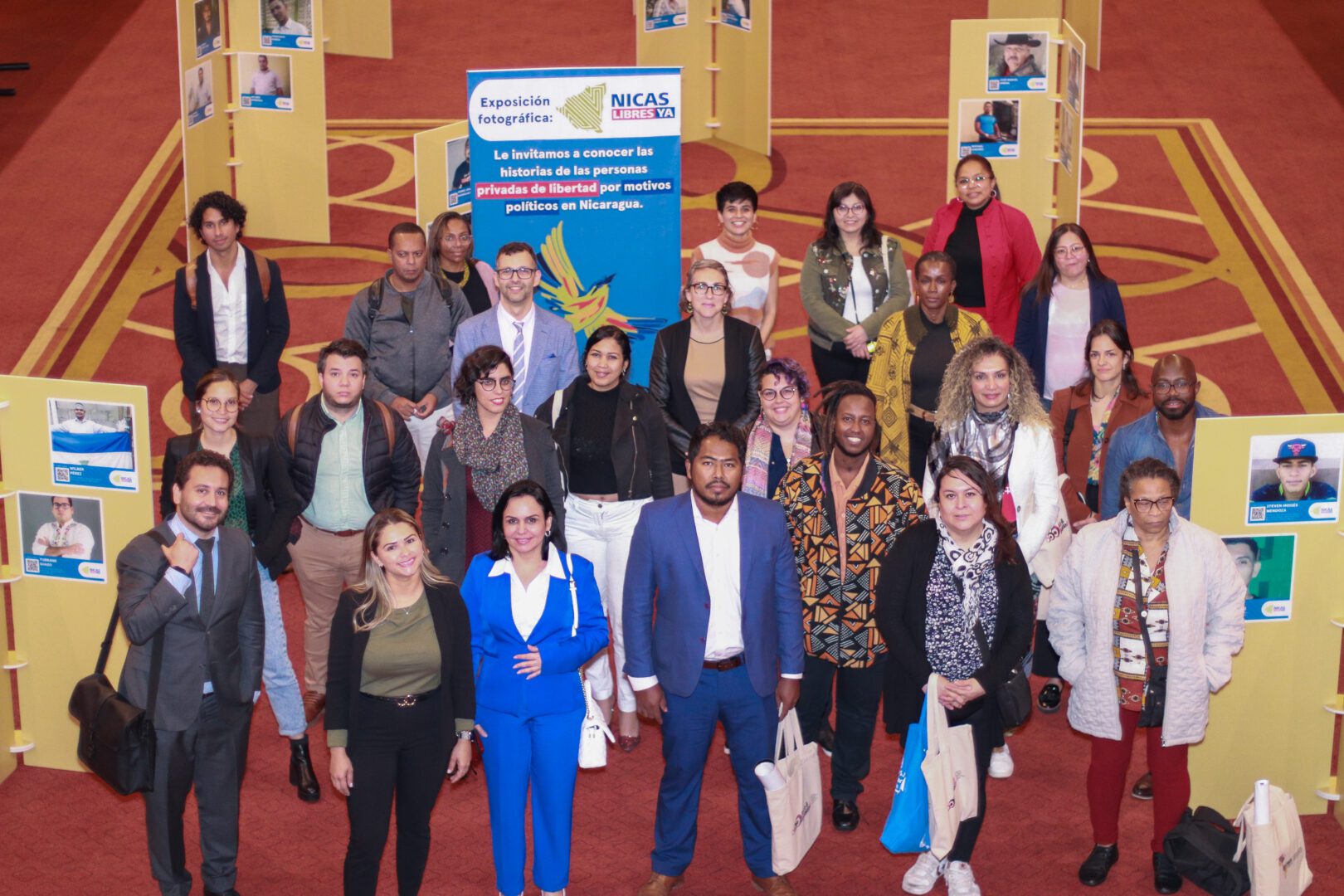The Institute on “Afro-Peruvian Art Ahead of the 2017 Census: Be Seen, Be Counted”
Lima, Peru | December 20, 2016 The Institute on Race, Equality and Human Rights, working alongside the Center for the Development of Afro-Peruvian Women (CEDEMUNEP), organized a seminar entitled “Afro-Peruvian Art ahead of the 2017 Census: Be Seen, Be Counted”. The goal of the one-day conference, which took place in Lima, Peru, was to disseminate […]

Lima, Peru | December 20, 2016 The Institute on Race, Equality and Human Rights, working alongside the Center for the Development of Afro-Peruvian Women (CEDEMUNEP), organized a seminar entitled “Afro-Peruvian Art ahead of the 2017 Census: Be Seen, Be Counted”. The goal of the one-day conference, which took place in Lima, Peru, was to disseminate information and sensitize key members of the Afro-Peruvian artistic community about the importance of the upcoming 2017 National Population and Housing Census.
The seminar was held in the Peruvian Congress’ Quiñones Room and was attended by well-known personalities from Afro-Peruvian show business, such as Chumbiauca Sotelo, known as “Cholo Chumbiauca”; Juan Medrano “Cotito”; Alfredo Valiente; and Porfirio Cartagena “Fido”; among many others. Juan Carlos Del Águila, President of the Congressional Foreign Relations Committee, opened the seminar by encouraging the participants to approach their congressmen to continue promoting actions in favor of the Afro-Peruvian community.
The conference was divided into two panels. The first featured the participation of the head of the National Institute of Statistics and Informatics (INEI), Anibal Sánchez, who reported on the background and mechanisms of the National Population and Housing Census in Peru, as well as other censuses, which make it possible to gather information about the percentage of Afro-Peruvians in the population and their quality of life. In addition, he informed the public about the change of date for the census, which will be pushed from June to possibly September 2017. On behalf of the Ministry of Culture’s Department of Public Policies for the Afro-Peruvian Population, Carlos Sánchez reported on several specialized studies on the Afro-Peruvian population carried out with the support of said Ministry. These reports revealed indicators of poverty, health, housing, education, employment and perceptions of racial discrimination.
Concluding the first panel was the presentation of Luis Sandoval, Director of the Millennium Theater Group, who emphasized the positive role, held for many years by Afro-Peruvian artists and cultural groups, of reviving and promoting Afro-Peruvian culture, as well as everyone who constantly works to increase the self-esteem of the Afro-Peruvian community. All panelists emphasized the lack of statistical data on the Afro-Peruvian population and the negative repercussions of this gap in the design of public policies at the local, regional, and national levels.
The second panel included Elvia Duque, Latin America Program Officer at the Institute on Race, Equality and Human Rights; Cecilia Ramírez, Director of the Center for the Development of Afro-Peruvian Women – CEDEMUNEP; and Danny Areas, Director of the Únete Afro Group. The panel urged Afro-Peruvian celebrities linked to entertainment and sports to broadcast a message and spread awareness on the 2017 Census, given they have the capacity to convene groups and reach all populations sectors. Likewise, a strong plea was made for them to join the Be Seen, Be Counted campaign, and to use their artistic expressions through music, dance, and painting, among others, or recognition as athletes to promote: 1) ethnic/racial self-identification according to the concepts likely to be used in the 2017 census, and 2) education for families so that they request census interviewers to ask the ethnic/racial self-identification question.
Despite the 2017 census process – and more specifically the topic of Ethnic/Racial self-identification – being discussed and worked on for the past two years, many celebrities do not know the structure of the survey question about ethnic/racial identification designed for the Afro-Peruvian population, and the concepts that will likely be included in it. Both INEI Chief Anibal Sánchez and CEDEMUNEP Director Cecilia Ramírez discussed the possible question to be used, as well as the response options that may be used in the 2017 census, which are: Negro (Black), Mulato (Mulatto/Mixed), Moreno (Brown), Zambo Afroperuano (Mixed African and Amerindian) and Afrodescendiente (Afro-descendant).
The event participants voiced their discontent that the Afro-Peruvian movement has not yet undertaken concrete efforts to link the artistic and celebrity sector in supporting important themes for the Afro-Peruvian community. Therefore, the seminar was an important step, as artists highlighted the need for new seminars to exchange experiences and generate strategies of action to support the 2017 Census.
The Institute on Race, Equality and Human Rights has been working with Afro-Peruvian organizations on the ground, to expand their participation in the 2017 Census.

